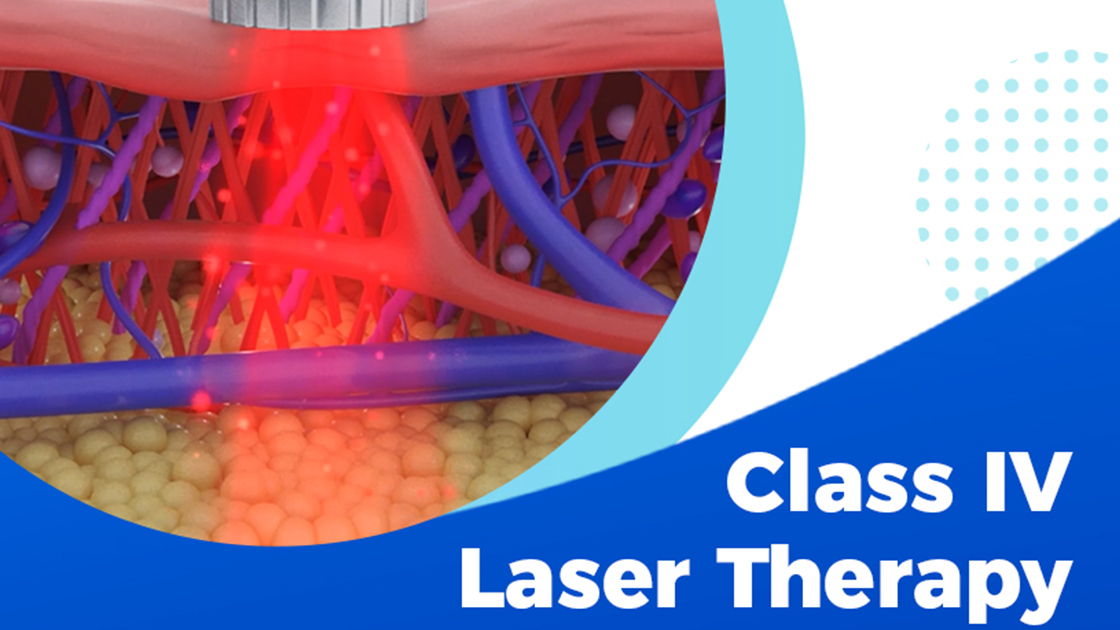Page Contents
Class 4 laser therapy, also known as high-intensity laser therapy (HILT). It has gained popularity in medical settings for its therapeutic effects on various conditions. It operates on the principle of photobiomodulation, where photons of light are absorbed by cellular structures, leading to physiological responses that promote healing and pain relief.
How Class 4 Laser Therapy Works
Class 4 lasers emit high-intensity light at specific wavelengths, typically in the infrared spectrum. When applied to the skin, photons from lasers penetrate deep tissues. Chromophores like cytochrome c oxidase in mitochondria absorb them. This absorption triggers a cascade of biochemical reactions, including:
- Increased ATP Production: Photon absorption stimulates mitochondrial activity, leading to enhanced adenosine triphosphate (ATP) production. ATP is the energy currency of cells, essential for cellular functions and repair processes.
- Cellular Signaling: Laser light modulates cellular signaling pathways, including the release of growth factors, cytokines, and nitric oxide. These signaling molecules regulate inflammation, immune responses, and tissue repair.
- Anti-Inflammatory Effects: Laser therapy reduces inflammation by inhibiting pro-inflammatory mediators and promoting the resolution of inflammatory processes.
- Analgesic Effects: The release of endorphins and modulation of pain receptors result in pain relief and improved pain tolerance.
Potential Side Effects of Class 4 Laser Therapy
Class 4 laser therapy is usually safe but can cause side effects if used incorrectly or at wrong settings. It’s essential to follow proper guidelines to minimize potential risks. Some potential side effects include:
- Skin Irritation: Prolonged exposure or high-intensity settings may cause temporary skin irritation, redness, or mild burns. Proper positioning of the laser probe and monitoring skin reactions can help prevent this.
- Eye Damage: Direct exposure of the eyes to Class 4 laser light can cause eye damage, including retinal burns and vision impairment. Laser safety goggles must be worn by both patients and practitioners to protect against accidental eye exposure.
- Heat Sensation: Patients may experience a mild heat sensation during laser therapy, particularly in areas with increased blood flow. This is normal and usually subsides after treatment.
- Temporary Discomfort: Some individuals may report temporary discomfort or aching sensations during or after laser therapy sessions, especially if the treatment area is sensitive or inflamed.
Mitigating Side Effects and Ensuring Safety
To minimize the risk of side effects and ensure safe and effective Class 4 laser therapy:
- Professional Training: Healthcare providers administering laser therapy should undergo specialized training in laser safety, treatment protocols, and patient assessment.
- Patient Assessment: Conduct a thorough patient assessment, including medical history, skin type, and sensitivity to light, to determine the appropriate laser settings and treatment parameters.
- Proper Equipment Calibration: Make sure Class 4 laser devices are calibrated and maintained as per manufacturer instructions for precise treatment results. This ensures accuracy and consistency in outcomes.
- Skin Protection: Use appropriate techniques to protect the skin, such as cooling devices, contact techniques, or distance adjustment, to prevent skin irritation or burns.
- Eye Protection: Both patients and practitioners must wear laser safety goggles specifically designed for the wavelengths emitted by Class 4 lasers to protect against accidental eye exposure.
- Monitoring and Follow-up: Monitor patients during and after laser therapy sessions for any adverse reactions or discomfort. Provide post-treatment instructions and schedule follow-up appointments as needed.
By following these guidelines and protocols, healthcare providers can safely harness the therapeutic benefits of Class 4 laser therapy while minimizing the risk of potential side effects, ensuring optimal patient care and treatment outcomes.
